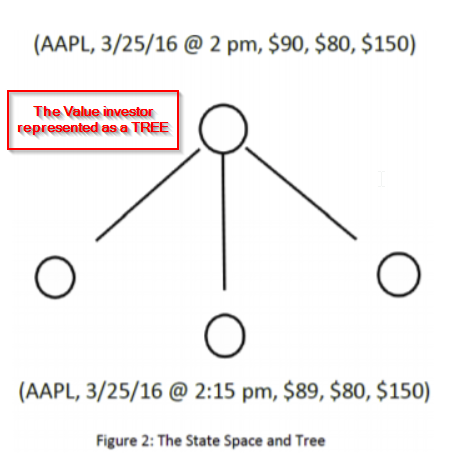Artificial Intelligence and Value Investing
- Korok Ray
- Journal of Investing, Spring 2018
- A version of this paper can be found here
- Want to read our summaries of academic finance papers? Check out our Academic Research Insight category.
What are the Research Questions?
- Can machines allocate capital in the classic style of a value investor like Benjamin Graham or Warren Buffett?
What are the Academic Insights?
By connecting two broad and disparate areas (the innovative AI domain and the more old-fashioned value investing), the author speculates:
- YES- With the right kind of AI it will be possible.
The author covers three specific areas of AI that are relevant in the domain of value investing:
- SEARCH- For value investing (purchasing stocks at a price below their intrinsic value), the search problem has both quantitative ( accounting ratios for instance) and qualitative aspects (guidance during conference calls). It is with the second ones that AI can shine. For example, it could be that managers who discuss their firm in conservative language are more likely to represent a value company. Capturing this is possible with textual mining.
- LEARNING- There are two categories of learning: “supervised” and “unsupervised.” In the first category, there is human supervision where a human classifies a set of input-output pairs according to one or multiple hypotheses, which is the so-called training set that is fed to the machine. The main issue here is to have a sufficient training set ( value investors typically have small concentrated portfolios of stocks, which will require supplementing the set with intermediate data). In the second category, the computer learns on its own. This is where the cutting edge is. It is called reinforcement learning. For value investing, it means that the computer needs to simulate the selection of the attributes that lead to the selection of securities.
- REASONING-This is a goal of computer science, that has not been reached yet but could very realistically happen in the near future. In value investing, it could mean the possibility for a computer to reason about managerial attributes and company quality based on what is and what is not disclosed in its financials.
Why does it matter?
Value investing is about rationality in the face of irrational sentiment and mass investor psychology (Brandes, 1998). The irrationality of human investors drives prices away from their fundamental value. Computers, rational machine, should be at an advantage compared to the discretionary investment manager. The author suggests that the value investing community should embrace, rather than fight, the AI secular trend. After all, computation can assist human reasoning.

The results are hypothetical results and are NOT an indicator of future results and do NOT represent returns that any investor actually attained. Indexes are unmanaged, do not reflect management or trading fees, and one cannot invest directly in an index.
Abstract
Artificial intelligence (AI) has proved useful in high-frequency trading, but less so in classical value investing. This article speculates on how recent advances in AI may be profitably employed for long-term, buy-and-hold discretionary value investing. The core idea is relying on the ability of machines to reason and learn.
About the Author: Wesley Gray, PhD
—
Important Disclosures
For informational and educational purposes only and should not be construed as specific investment, accounting, legal, or tax advice. Certain information is deemed to be reliable, but its accuracy and completeness cannot be guaranteed. Third party information may become outdated or otherwise superseded without notice. Neither the Securities and Exchange Commission (SEC) nor any other federal or state agency has approved, determined the accuracy, or confirmed the adequacy of this article.
The views and opinions expressed herein are those of the author and do not necessarily reflect the views of Alpha Architect, its affiliates or its employees. Our full disclosures are available here. Definitions of common statistics used in our analysis are available here (towards the bottom).
Join thousands of other readers and subscribe to our blog.

